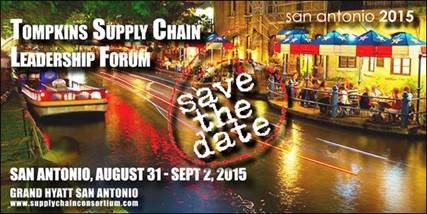INTRODUCTION AND PURPOSE
This Paper addresses the Program Management Office (PMO) at the Chief Supply Chain Officer (CSCO) level. How it is best organized, staffed, operated, and valuebased. It describes leading practices and provides guidelines for supply chain leaders seeking transformative improvements in their operations.
While the PMO has been in business use at many companies for over 20 years, its purpose and methods have changed since it originated. Originally, the PMO was known as the “Project Management Office.””Project Management Office” was established with the origin of Enterprise Resource Program (ERP). The major software providers at the time were SAP and Oracle. Together the larger systems’ integrators encouraged customers to create physical spaces where “command and control centers” could drive and oversee the multiple tasks required to implement an ERP and bring it to use. The “Project Management Office” was often charged with defining and maintaining standards for project management within the enterprise.
The original “Project Management Office” began to support companies that more and more turned toward the philosophy of management by projects. The “project Management Office” was seen as the “consulting, mentoring, augmenting, and training” function for projects. The objective was seen as providing knowledge, special skills, training, and lessons learned to project managers so they could perform their duties more effectively.
Somewhat independently, during the 90’s, the Defense Department and NASA created the “Program Management” term (PgM) a process for managing the components of developing major weapons systems, space vehicles, and executing launches.
As the Project Management (PM) methodologies have evolved, a profession has been developed that has included standards, certifications, and other important methodologies for managing projects ontime and onbudget. The Project Management Institute (PMI) is the largest global organization for standards and certifications for PM. There is a complete body of knowledge exists for how to perform effective PM.
This paper addresses the program management function and its relation to PMO. The standards for the PgM process have evolved over the past 10 years. PMI has only within the past few years provided guidelines and certifications for the Program Management Professional (PgMP). The PM role is to manage an individual project, the PgM responsibility is to manage in an integrated and synergistic manner, multiplerelated projects (sometimes referred to as the “portfolio of projects”). The PMO sets the common language, establishes the project links, and provides the basis for management decisions.
Just as the PM role is now supported by project management support, the PMO has evolved with the introduction of technology and its ability to enable a more virtual process, and not necessarily within a physical entity. The principles of the PMO have not changed, it remains the preferred process for managing multiple initiatives or projects in an integrated and synergistic manner, and provides the platform for related management decisions.
The use of PMO for supply chain management is also relatively recent in its adoption. A few leading companies undergoing supply chain transformations or adding new important programs have adapted the PMO for managing the multiplerelated projects that impact the supply chain processes, practices, and organizations (not only technologies). They have “located” the PMO outside of the IT organization. PMO has been placed at the center of the CSCO level or with another Clevel, depending on the scope of the program and the corporate organization.
SURVEYING COMPANIES ON THE PMO
In order to better understand the state of PMO practices in today’s companies, we have surveyed Tompkins Supply Chain Consortium members. We asked several questions about their consideration, understanding, applications, and experiences with the PMO.
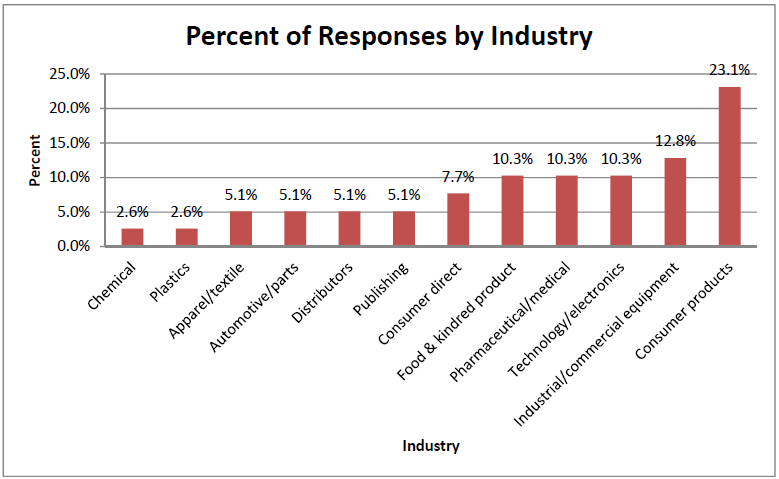
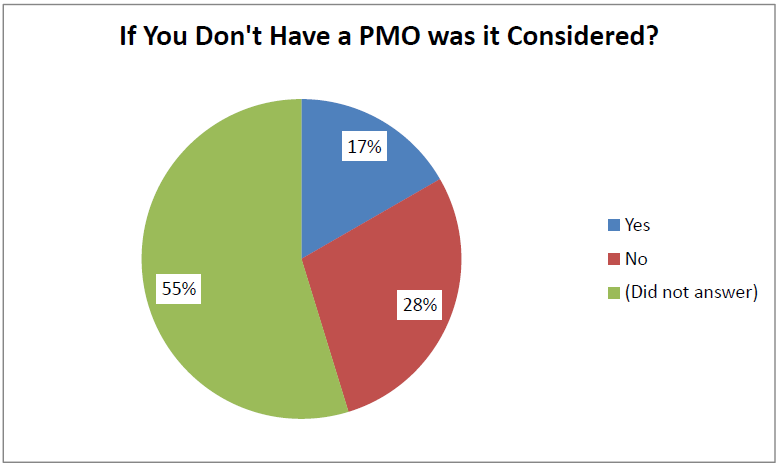
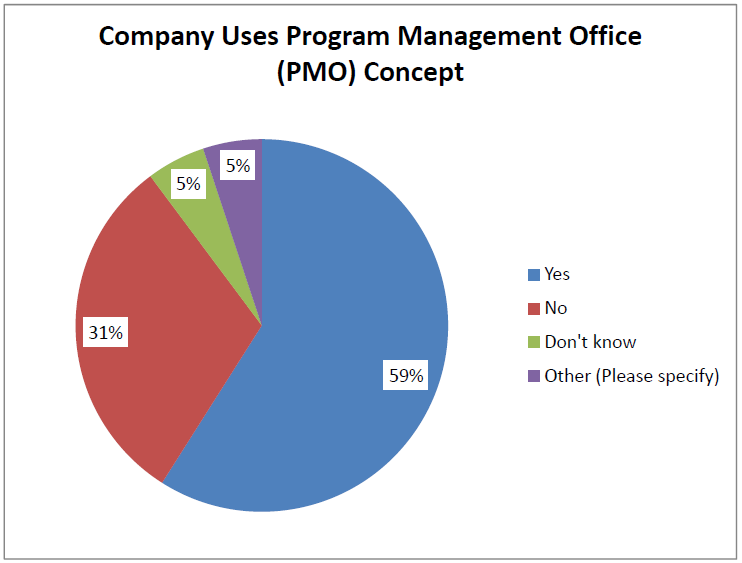
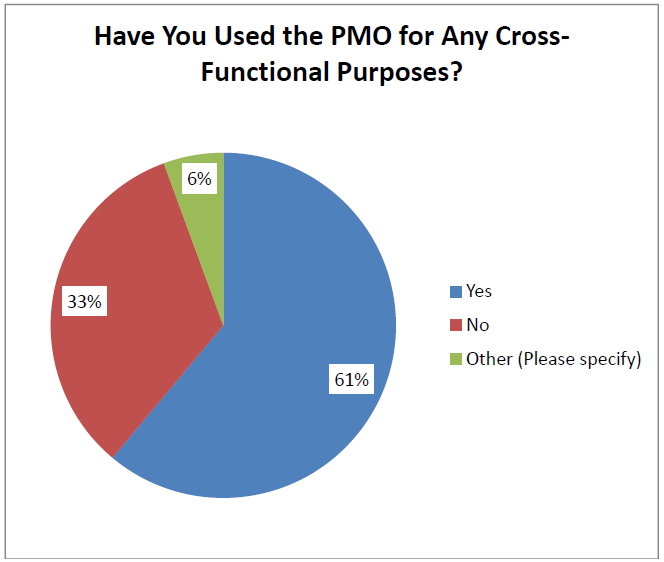
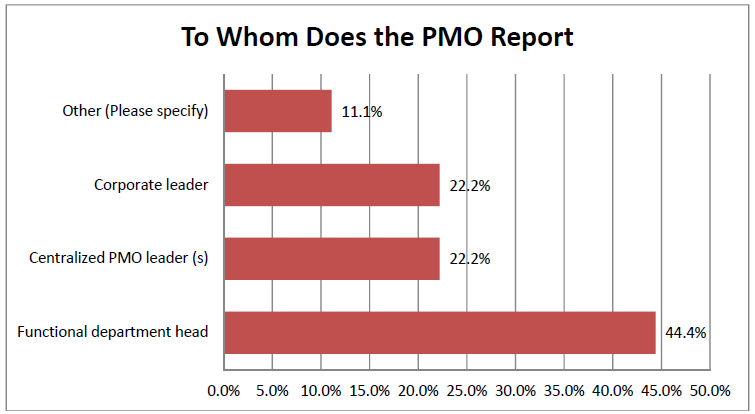
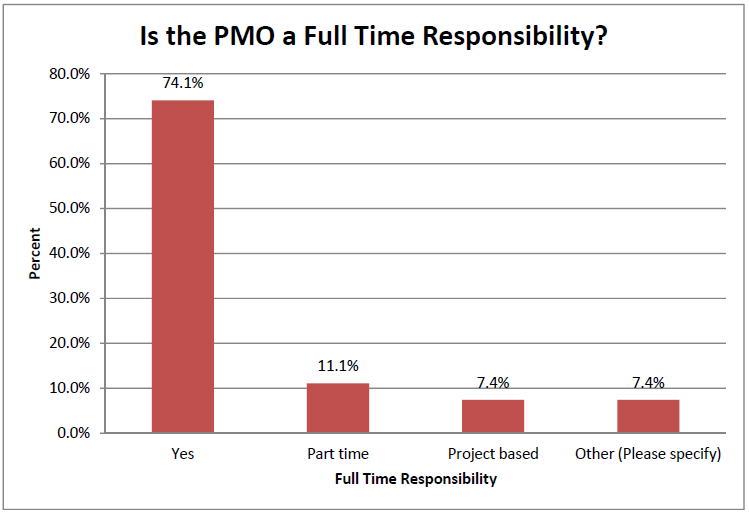
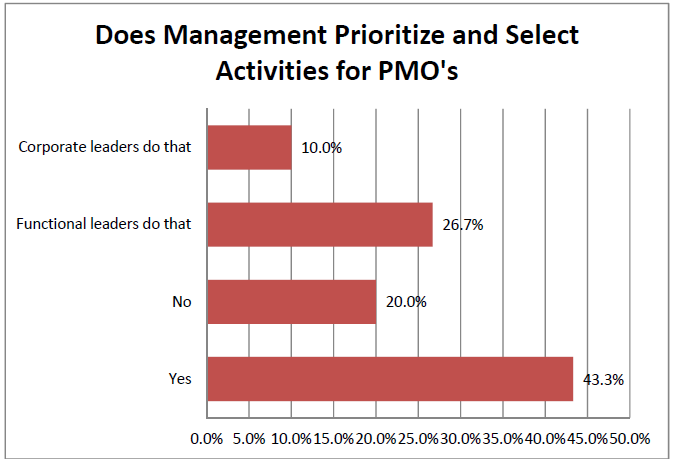
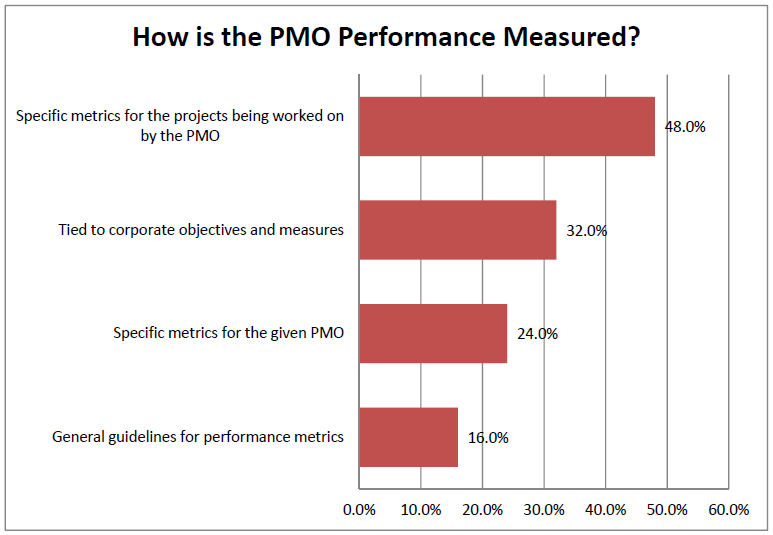
The remainder of this Paper addresses how to improve the use of the PMO and how to gain the most value from its effective operations.
WHAT IS THE PMO – ITS OBJECTIVES and ITS METHODS?
The program management methodology serves as the base of the PMO entity, which exists to guide, monitor, support, receive, acknowledge, and communicate information provided by the multiple related projects under its oversight. As such, the methodology is established to fit the program, the processes, and the company. It becomes the “eyes and ears” of the participants and executive sponsors.
Despite the serious attention given to project management over the past 20+ years, it is realized that project success rates remain lower than intended. Tompkins Supply Chain Consortium survey showed that 65% of projects do not meet time, cost, and scope targets, 32% of these are traced back to inadequate PM practices, and another 20% due to lack of effective communications. These unsatisfactory findings have also given rise to the PMO function – as an entity that exists to help assure more successful projects and thus successful programs.
This definition of what is the PMO varies somewhat from what many believe. It is not one person, not a “control tower”, or, an executive. Rather, it is an entity that guides, tracks, and keeps eyes on the ultimate goal of the program.
When defining the PMO and its methodology we need to use caution. If the set of rules are too rigid this could lead to inefficiencies and even blockages. There is a risk that the PgM and governing structures lose track of the strategic goals while monitoring and controlling the details of project time, budget, and scope. Yet, on the opposite side, a much too relaxed methodology could hinder the PMO role and turn it toward monitoring only leading to no value added. Risk management is thus minimized or hidden causing costs to rise – both directly and in opportunity terms.
The members of the PMO, PgM, and staff must be seen as critical drivers of business improvement. The methodology must enable program management and facilitate assistance to PM’s when needed. Identifying the gaps is one thing, addressing them quickly and effectively is another.
The program management methodology should include seven capabilities:
-
Program Components: For example weighted criteria for evaluation, value statements, balanced scorecards, and alignments with the business strategy.
-
Company Business Expertise: The mission of the PMO must be aligned directly to the strategies, goals, and culture of the company. At all times charters, benefits, targets, and results should be kept clear and in full sight, as are lessons learned.
-
Schedules and Budgets: Monitoring, resource allocation, role definition, interdependencies, progress reporting, and governance structure must all be set.
-
Quality Standards: In conformance with that of the company metrics, quality assurance, deliverables, and PDCA (plan, do, check, act) must also be set.
-
Resource Management: The following are supporting roles aggregate resource requirements, check availability, and qualify.
-
Risk Management: Set these standards at the program level for the PM’s along with maintaining the consolidated view and supporting mitigation.
-
Monitoring and Control: Structure, compile, and present the information needed for continued and coordinated progress; promulgate the scorecard format or template selected; and map components to planned benefits.
It is this last capability that characterizes most PMO’s. While this is important it is only one of the seven cited. All seven of which define the effective PMO. The best companies recognize this and work to place the most qualified people in the PMO helping them apply the best methodologies for its application.
THE ORGANIZATION OF THE PMO
The PMO is established with a mission of providing a methodology to monitor and control, support PM’s, and to provide reporting and other communications. However the stakeholders are often times heterogeneous representing different departments or processes. Their expectations and behaviors with the PMO are often diverse. The PMO needs to operate with some degree of flexibility and adaptability. Its organizational status is oftentimes ambiguous.
-
Its mission as both technical and social is paramount. The Executive sponsor(s) for supply chain organizations must include the CSCO, need to act in sustained sponsorship and commitment for its role and responsibilities. Its charter must be clear and reflect objectives, boundaries, and authorities. Its life cycle transcends projects that come and go depending on the programs and initiatives.
-
There are different levels of a PMO. It can exist and be charged with the basic purpose of overseeing a set of projects that make up a program (level 1) or, in support of a division or department (level 2), or take on enterprisewide initiatives (level 3). The level 3 PMO normally acts as a governing process for all projects assessing scope, allocating resources, verifying time, budget, risks, and may also give preapprovals.
Measurement of the PMO performance will be important to the organization. Some commonly used measurements include:
-
reductions in time of project and program completion
-
effective resource utilizations and productivity
-
risk management successes
-
time to recover from project mistakes
-
increased customer satisfaction (internal and external)
-
more effective communications (up, down, and across)
-
less bureaucracy
Above all the PMO must be viewed as a supporting function. It is not a constraining one as it provides more than adhering to an administrative requirement.
THE PROJECT MANAGER (PM) VS. THE PROGRAM MANAGER (PgM)
The fact that the PMI has evolved standards, skills, and certifications for effective PM over many years, and only completed the certification process for PgMin 2013, points out that significant differences exist. It is helpful to summarize these as follows:
|
The Project Manager and the Program Manager – Important Distinctions |
|
|
Project Manager (PM) |
Program Manager (PgM) |
|
Manages and directs projects |
Manages and guides programs of projects |
|
Driven by ontime, on budget, and quality of work |
Driven by integration, benefits, reporting, and interdependencies |
|
Technical skills are paramount |
Program and coaching skills are paramount |
|
Details matter most |
Communication matters most |
|
Singular focus on objective |
Multiple focuses on alignment and results |
|
Strongest interaction with team |
Strongest interaction with executives |
|
Domains are about projects |
Domains are: governance, strategy, benefits, stakeholders, and engagement |
|
Change is not excessive |
Change is prevalent |
|
Risk is manageable |
Risk management is highly challenging |
|
Performance is project Key Performance Indicator |
|
PM and PgM both have ontime and onbudget demands, objectivesetting, and benefits definition. The contrasts, however, are significant as identified above, and often make the difference in results – whether for project or program. Thus, selection of the right PM’s and the right PgM’s are not straightforward and they are not consistent.
WHEN THE PMO FOR SUPPLY CHAIN PROGRAMS IS PREFERRED
The PMO function becomes valuable as multiple related projects are identified and launched together. The project types can be strategic, transactional, informational, or for infrastructure development or process improvement. The key phrase here is “…when taken and completed together, there are some important results produced…” Just having multiple projects underway does not justify a PMO. Only if the projects are multiple and related for some important result does it require the consideration of a complete PMO. The more complex the goal and projects are the more a PgM is needed. This does not mean that a fullycertified PgM is required it does mean that competency in managing a program vs. a single project is important. The application of a PMO to supply chain improvements would normally occur under the following scenarios:
-
A Supply Chain Transformation: where the goal is to transform the strategies, organization, processes, technologies, and/or performance is sought.
-
A New Supply Chain Organization: where the options are many, and the enterprise needs detailed alternatives, and analyses to decide on the preferred organizational design.
-
New Supply Chain Processes: where more than one process is redesigned, (a) Order to Delivery; (b) Procure to Inventory Deployment; or, (c) Plan to Performance.
-
New Supply Chain Infrastructure: where the network design is implemented with new facility missions, new locations, new operations, and new material handling equipment.
-
New Supply Chain Technologies: where the technology includes more than one point solution – e.g., planning, or endtoend execution.
Dozens of responses were received from companies within 12 Industry segments and revenues from $250M to over $20B. Several interesting results and insights were yielded:
-
Some 60% of the respondents reported the PMO concept is in some type of use at their company
-
Over 55% of those who do not use a PMO did not consider using a PMO.
-
Of those that do not use a PMO the primary factors were: (1) a lack of executive understanding of the benefits, (2) its costs and resources were deemed too excessive, (3) cultural barriers, (4) shortage of domain knowledgeable people; and (5) lack of methodologies and skills.
-
Of those that do use the PMO the primary positive feedback was: (1) if done properly, it enables focus on strategic objectives, drives collaboration, and transparency, (2) it can help align project delivery with supply chain priorities, (3) it helps with consistency and risk management, (4) it maintains priority management and discipline for small as well as large projects, and (5) the PMO brings leadership engagement with the use of decision gates and better management through milestones.
-
Of those that do use the PMO some cautions were reported primarily ones being: (1) change management is very challenging, (2) if used only for coordination and reporting the status of initiatives, the value will be questioned, (3) balancing multiple and conflicting priorities, and tying strategies to portfolio, programs, and projects, is very challenging, (4) if limited to one functional area (e.g., IT or Engineering), then enterprise or supply value (crossfunctional) is weakened, and (5) unless the purpose is well defined across and within the enterprise or business unit, then the value is questioned and influence is weakened.
-
Of those that do use the PMO 50% use a particular methodology. 47% also use a software tool, Sharepoint being the most popular, with Oracle and Microsoft also mentioned.
-
The PMO is viewed as a fulltime responsibility by almost 75% of those using it. The number of staff assigned ranges from one to over five, with almost 60% citing over five.
-
With regard to performance measurement almost 50% have specific metrics for the projects under PMO oversight. Only 25% have specific metrics for the PMO itself.
-
The top issues in PMO execution were: (1) the lack of awareness of the value, (2) to focused on format and process, vs. tangible progress, (3) to many “time keepers” or “task checkers” vs. enablers, (4) lack of executive support, and (5) lack of follow through, especially on change management and lessons learned.
The Survey yielded these valuable insights all of which need to be considered. These issues need to be resolved for the PMO to truly add value to the enterprise or business unit.
THE PMO AND KNOWLEDGE MANAGEMENT
One of the most important goals of the PMO is knowledge management. The PMO must be knowledgeable on the culture and procedures of the company, of best operating practices, project management lessons learned, decisionmaking processes of the organization, and best applications of criteria such as customer needs, and competitive intelligence. Unless the company has a strong knowledge management program the PMO should be the “goto” source for PM’s or others for useful information and tips.
This compilation and application of knowledge management benefits the individual competencies of PM’s and team members alike. Standards for competencies are as important as models for effective performance. Knowing how and where to acquire special knowledge can facilitate continuous improvement as can sharing practices and approaches. In our experience with developing, improving, and applying PMO’s and PgM methodologies, knowledge management and its application often makes the difference in program management and performance. This is true not only in the knowledge base but also in how it is conveyed, accepted, and applied.
HOW THE PMO AFFECTS CHANGE MANAGEMENT
Change is always hard especially in larger organizations. Initiatives typically disrupt established power structures, business processes, and ways things are completed. Habits and familiarities are strong determinants of productivity, quality, efficiency, and results. Informal networks are often more important and more powerful than formal hierarchies. At times influencers provide more advice and guidance than managers do.
For the PMO to be effective change management needs to occur. Goals are only achieved if: (a) the program management methodology is effective, and (b) change management is successful.
Many companies that execute a PMO function with an effective methodology are dissatisfied because the PMO is ineffective in change management. This is avoidable if the change management methodology is proven and executed by talented professionals. A strong change management methodology includes steps and tools for the behavioral side of the program that address the expected resistance and “traps”. The methodology will include steps and tools that are targeted at the following known “pushbacks”:
-
Executive Commitment: The absolute need to have serious and sustained executive sponsorship and commitment to the change and to the PMO.
-
Manager and Team BuyIn’s: The need to have managers understand and believe in the rationale for the change along with every staff member being fully informed on why and when. Define “what’s in it for me” to each person.
-
Reward and Recognition: Performance measures (both for teams and individuals) that promote the change and reward the change.
-
OverCommunications: Keep all people informed at all times before, during, and after the program is developed and executed.
-
Support Change Agents: Use the informal network to leverage influence.
-
Address the Resistors: Identify and cultivate those resisting the change.
-
Address the FenceSitters: Identify and cultivate those who are on the fence. .
-
Use Pilot Tests: Test and adjust as necessary.
-
Promote Success Stories: Find them, communicate them, and market the successes.
THE TOOLS FOR THE PMO
As project management guidelines and methods have been developed and certified over the years there are several software supports and other tools that have been introduced that facilitate and enable the PM function. Some of the common software products that serve to support the PM include:
-
Box
-
Deltex
-
HP
-
Microsoft Project
-
NetSuite Primavera (Oracle)
-
SAP Sharepoint
-
Visio 2010
These products support the PM function but are not yet fully developed to enable the PMO process.
There are selected PMO tools that have been developed in support of the program management process. The initial wave of these was directed at Project Portfolio Management (PPM) and can extend the PM support to more than one project. Daptiv and Instantis are early examples of this category Instantis, has recently been acquired by Oracle.
These tools were designed more for the implementation of an ERP than for the program management of operational projects that focus on supply chain transformations or other scenarios described. The PgM methods are oriented toward IT projects.
More recently we have seen others tools introduced or modified to address further needs:
-
BOX
-
Daptiv II
-
Innotas II
-
Mavenlink
-
Microsoft II
-
Moot
-
Primavera II
-
Sharepoint (a knowledge management and shared information method)
Additionally other product development software products have entered
the PMO process, “Stages Gates” are often relevant to integrating projects to yield a program. “Stage-Gate” is a methodology that provides this needed type of support.
The evaluation of PMO tools is beyond the scope of this paper. The availability of quality software tools to support and enable the PMO remains somewhat limited.
SUMMARY AND CONCLUSION
The PMO has developed as a good idea with high potential, so far with limited success. As seen from the Tompkins Supply Chain Consortium survey there are several factors involved in determining the success of the PMO.
-
The seven key limiting factors can be summarized as: the PMO director and staff have been ineffective in adding value.
-
The behavior of the PMO team has been overly heavyhanded rather than supportive.
-
The PMO methodologies have been weak or poorly applied.
-
The PMO has been viewed more as a barrier than as a beneficial function.
-
The change management process has not been effective or sustaining.
-
The PMO staff does not have the credibility with PM’s and other team members.
-
Top management has not sponsored the PMO nor have they made use of it.
Following the principles of strong PMO development, organization, planning, and execution, the PMO will add value and the value will be recognized. The companies that make effective use of the PMO end up being more efficient and reach higher levels of performance. Due to the rate of project success increasing, fewer mistakes or doovers are necessary, and the program achieves benefits faster and longer.
Each supply chain organization needs to decide for itself whether or not the use of a PMO will add value to its goals and objectives. Once that decision is made its planning and execution needs to be consistent with any other well defined process:
-
the strategy must have clear purposes and objectives
-
the people who lead and staff it must be talented, respected, domain knowledgeable, and constructive
-
the process must be well defined, efficient, effective, and transparently communicated to all.
-
the methodology and/or technology support must be consistent with the mission and objectives
-
the measurement of performance must be meaningful and aligned with the corporate goals and with the PMO mission
While these requirements may seem daunting, the value of the PMO can well exceed the effort required. The benefits of time, costs, and quality are possible. This can be achieved by a wellplanned and a wellexecuted PMO.
About Tompkins International
A supply chain consulting and implementation firm that maximizes supply chain performance and value creation. We enable clients to be more profitable and valuable, while also becoming more agile, flexible, and adaptive to the marketplace. Tompkins collaborates with client teams to develop improved operations strategies, supply chain planning, and execution across all the Mega Processes of supply chains (PLANBUYMAKE MOVEDISTRIBUTESELL). Tompkins is headquartered in Raleigh, NC and has offices throughout North America and in Europe and Asia. For more information, visit: www.tompkinsinc.com.
Register for the 2015 Tompkins Supply Chain Leadership Forum
Meet the expert! Learn more about this topic and meet the report author Bruce Tompkins at the Tompkins Supply Chain Leadership Forum in San Antonio, Texas from August 31- September 2, 2015.
For details and registration information, click here. To register, contact Patty Trocchio at events@supplychainconsortium.com.
